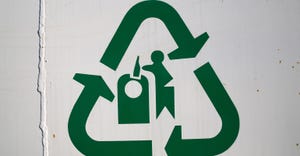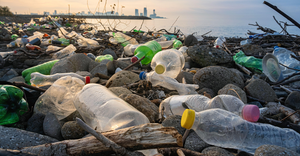Fourteen years ago, when the garbage barge was sailing through the Caribbean, many Americans believed that we were in a landfill crisis. Legislators responded by passing an avalanche of recycling laws, believing that if we didn't recycle, we would run out of places to put our trash.
America, of course, is a very large country. We weren't running out of landfill space, although we often seem to be running out of the political will to site disposal facilities.
Over the years, several attempts were made to put our disposal needs into context and to show exactly how much space we really needed for landfills. In a recent attempt, Bjorn Lomborg, author of "The Skeptical Environmentalist," asserts that during the next 100 years, America's garbage could be placed in a 100-foot-high pile that is slightly less than 18 miles on each side. As he more graphically puts it, the 100-year landfill would cover 26 percent of Woodward County, Okla., or less than half of 1 percent of the state of Oklahoma. On a national scale, that is less than 0.0009 percent of the entire U.S. landmass. Even this Okie has to admit that's pretty small.
Lomborg's conclusion that we aren't running out of space is essentially right, even though his analysis underestimates how much space is needed for landfills. In his scenario, Lomborg only includes the space for the landfill cell itself. Yet, landfill sites also have administrative, storage and maintenance buildings, roads, scale areas and buffer zones. If we include those uses, as we would in the real world, we need a larger area. Let's be liberal and double the amount of land needed. Now we have covered half of Woodward County.
Lomborg also underestimates the amount of garbage that is landfilled by excluding construction and demolition debris. When we include everything that can be landfilled in a Subtitle D facility, we once again double the size of the landfill. In 100 years, Woodward County will be covered. And if we use state disposal data, instead of the EPA's, we need even more space — let's say one and a half or even two Woodward Counties. (And I'm not even going to ask how Lomborg could build a landfill 100-feet straight up. Let's just dig a hole instead and avoid further calculations.)
Yet, after all is said and done, Lomborg is absolutely right; we aren't running out of land. In reality, we don't need one big landfill. We need a whole lot of small ones, scattered throughout the United States. Recyclers may not want to hear this, but we don't need much land for our disposal needs. Fortunately, we have better reasons to recycle than "saving" land.
Several years ago, when Virginia politicians discovered that running against garbage was easier than solving problems, I calculated that all of the land used for Virginia's operating landfills -- buildings, buffer space and landfill cells -- occupied 0.007 percent of the state's landmass. A similar calculation for the United States would show a smaller percentage of the landmass being used for landfills because the Old Dominion is a small state.
We're not running out of space. Until someone invents a Star Trek-like machine that will dematerialize garbage, we need landfills. Let's just not run out of the political will to build them.
The columnist is director, state programs for the Environmental Industry Associations, Washington, D.C.
Opinions in this column do not necessarily reflect the National Solid Wastes Management Association or the Environmental Industry Associations. E-mail the author at: [email protected]
About the Author(s)
You May Also Like




